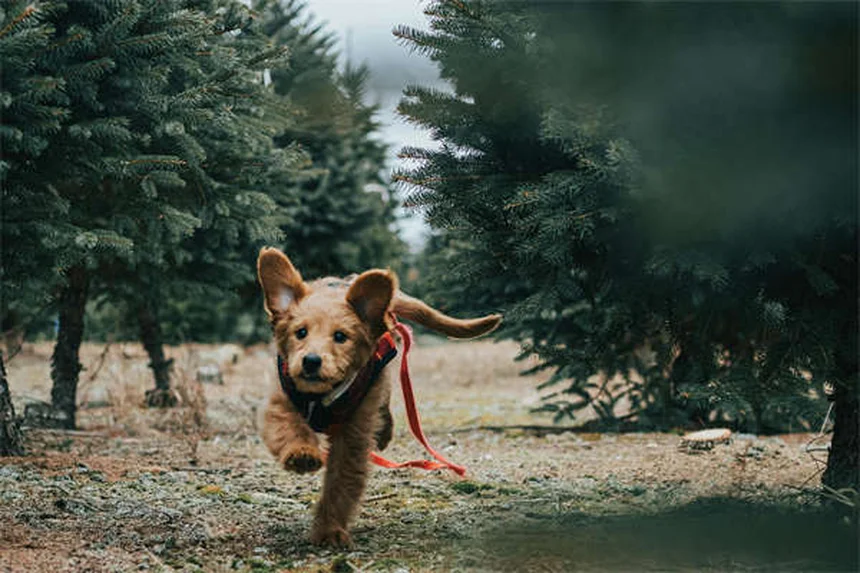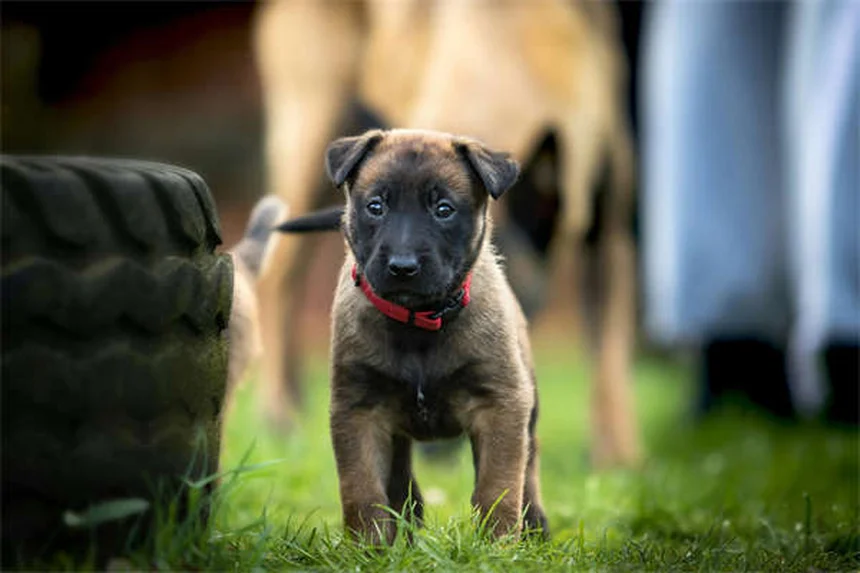What is epiphysitis in horses? The answer is: It's a painful bone condition affecting young, fast-growing horses where their growth plates become inflamed and swollen. I've seen too many well-meaning owners accidentally cause this by overfeeding their promising young prospects. The truth is, epiphysitis strikes most often in foals 4-8 months old, though I've treated cases up to 2 years. Those chunky, overfed babies growing like weeds? They're prime candidates for trouble.Here's what you need to know right now: epiphysitis isn't just growing pains - it's a serious condition that can impact your horse's future soundness. But the good news? With proper care, most mild cases recover completely. In this guide, I'll walk you through everything from spotting early symptoms to creating a prevention plan with your vet.
E.g. :5 Giant Rabbit Breeds That Will Amaze You
Advertisement
- 1、Understanding Epiphysitis in Young Horses
- 2、Why Does This Happen?
- 3、Getting the Right Diagnosis
- 4、Turning Things Around: Treatment Options
- 5、Prevention Is Better Than Cure
- 6、Your Action Plan
- 7、The Hidden Dangers of Over-Supplementation
- 8、The Exercise Equation
- 9、Breed-Specific Considerations
- 10、Weather and Seasonal Factors
- 11、The Human Psychology Factor
- 12、Alternative Approaches Worth Considering
- 13、The Bigger Picture
- 14、FAQs
Understanding Epiphysitis in Young Horses
What Exactly Is This Condition?
Let me break it down for you - epiphysitis (or physitis if you want the fancy term) is like when a kid grows too fast and their bones can't keep up. Imagine your teenage growth spurt happening way too quickly - that's what these young horses experience. The growth plates in their legs (we're talking tibia, radius, and cannon bones) get all swollen and unhappy.
Here's the kicker: This typically hits horses between 4-8 months old, but I've seen cases in youngsters up to 2 years. The worst offenders? Those chunky, overfed babies growing faster than a weed in summer. Their bodies simply can't handle the rapid development, especially when they're packing on pounds from high-calorie diets.
Spotting the Trouble Signs
You'll notice something's off when the joints look like hourglasses - swollen at both ends. But that's not all:
- Your foal might wince when moving (that's the joint pain talking)
- Their legs could look puffy around the joints
- In severe cases, they might not even want to stand up
Think of it like when you sprain your ankle - except for these guys, it's their entire growth system throwing a tantrum.
Why Does This Happen?
 Photos provided by pixabay
Photos provided by pixabay
The Perfect Storm of Factors
While we don't know the exact cause (science is still figuring this one out), we've identified some major risk factors:
| Risk Factor | Why It Matters |
|---|---|
| Overfeeding | Too many calories = too fast growth |
| Excess Weight | More pounds = more stress on developing bones |
| Rapid Growth | Bones can't mineralize properly when growing too fast |
The real issue occurs when the cartilage at the growth plate fails to transform into solid bone properly. This failed ossification process leads to inflammation that makes everyone miserable - especially your young horse.
Is It Always the Same?
Here's something interesting - not every case is identical. Some foals develop problems from nutritional imbalances, others from genetic factors, and some from plain old bad luck. That's why treatment needs to be tailored to each individual case.
Getting the Right Diagnosis
Putting the Pieces Together
How do we know it's epiphysitis and not something else? Well, your vet will play detective by:
1. Checking all those physical symptoms we talked about
2. Taking X-rays to see what's happening inside those joints
It's like putting together a puzzle - the swelling tells part of the story, but the X-rays reveal what's happening beneath the surface.
 Photos provided by pixabay
Photos provided by pixabay
The Perfect Storm of Factors
You might wonder - how do we know this isn't just regular growing pains? Great question! The difference lies in those telltale radiographic changes at the growth plates that show abnormal bone development. Regular growing pains don't cause these structural changes.
Turning Things Around: Treatment Options
First Things First: The Diet Fix
When treating epiphysitis, we always start with the dinner plate. Here's what needs to happen:
- Cut back on calories (no more all-you-can-eat buffets)
- Balance the nutrients (quality over quantity)
- Slow down that growth (fast isn't always better)
I've seen cases where just adjusting the diet made a world of difference within weeks. It's amazing what proper nutrition can do!
Managing the Pain and Inflammation
While we're fixing the root cause, we can't ignore the discomfort. That's where NSAIDs come in - these anti-inflammatory medications help take the edge off while the body heals. But remember, these are just band-aids if we don't address the underlying issues.
And here's something crucial - we need to limit exercise during recovery. Think of it like putting a cast on a broken bone. The less stress on those inflamed joints, the better they can heal.
Prevention Is Better Than Cure
 Photos provided by pixabay
Photos provided by pixabay
The Perfect Storm of Factors
Want to avoid this whole mess? Start with these basics:
1. Work with your vet to create a balanced diet plan
2. Monitor growth rates regularly
3. Keep your foal at a healthy weight (no pudgy ponies!)
It's much easier to prevent epiphysitis than to treat it after the fact. Trust me, your future self (and your horse) will thank you.
The Long-Term Outlook
Here's some good news - most mild cases resolve completely with proper care. But severe cases? They might limit athletic potential down the road. That's why early intervention is so important.
Remember that horse I mentioned earlier? With diet changes and proper care, he went from limping to winning local shows within a year. That's the power of catching things early!
Your Action Plan
What You Can Do Today
Don't wait until you see symptoms to take action. Here's your checklist:
- Schedule a nutritional consult with your vet
- Start tracking your foal's growth weekly
- Educate everyone involved in care about proper feeding practices
Knowledge is power when it comes to preventing epiphysitis. The more you understand about your horse's development, the better equipped you'll be to spot trouble before it starts.
When to Call the Vet
Notice any swelling or lameness? Don't play the waiting game. Early intervention makes all the difference in these cases. Your vet can help you create a customized plan to get your young horse back on track.
At the end of the day, raising healthy horses is about balance - enough nutrition to grow, but not so much that it causes problems. Get that equation right, and you'll have a happy, sound partner for years to come.
The Hidden Dangers of Over-Supplementation
When Good Intentions Go Wrong
You know that feeling when you're trying to help but accidentally make things worse? That's exactly what happens when well-meaning owners go overboard with supplements. I've seen foals develop epiphysitis not from malnutrition, but from too much of supposedly "good" things.
Take calcium for example - while essential for bone development, excessive amounts can actually interfere with proper bone mineralization. It's like baking a cake with triple the recommended eggs - the result is a structural mess rather than a perfect sponge. The same principle applies to your horse's developing skeleton.
The Supplement Trap
Walk into any feed store and you'll see shelves packed with equine supplements promising faster growth, shinier coats, and better performance. But here's the reality check - most young horses don't need any of these if they're on balanced nutrition.
I once worked with a client who was giving her weanling seven different supplements daily. The poor colt developed severe epiphysitis within months. After we cut out all supplements and focused on proper forage balance, his condition improved dramatically. Sometimes less really is more!
The Exercise Equation
Finding the Sweet Spot
Ever wonder why wild foals rarely develop epiphysitis despite constant movement? It's all about the type and intensity of exercise. Free movement on varied terrain strengthens bones gradually, while forced exercise on hard surfaces can be disastrous.
Here's a simple rule of thumb - if you wouldn't make a toddler run laps on concrete, don't do it to your growing horse either. Their developing joints need gentle, consistent movement - not intense training sessions.
The Turnout Debate
Some trainers swear by strict stall rest for young horses, while others advocate 24/7 turnout. Who's right? Well, like most things in life, the truth lies somewhere in between.
Limited turnout (say 12 hours daily) on good pasture provides the perfect balance of movement and rest. The key is avoiding extremes - too much confinement weakens bones, while excessive movement on hard ground creates stress fractures. It's about finding that Goldilocks zone - not too little, not too much, but just right.
Breed-Specific Considerations
Not All Horses Are Created Equal
Did you know certain breeds are more prone to developmental orthopedic diseases? Warmbloods and Quarter Horses tend to grow rapidly, making them epiphysitis magnets if not managed carefully.
On the flip side, many pony breeds and mustangs develop more slowly, giving their bones time to mineralize properly. This doesn't mean you can ignore nutrition in hardy breeds - it just means you might have different management challenges.
The Big Baby Syndrome
We've all seen those adorable, roly-poly foals that look like they swallowed beach balls. But here's the uncomfortable truth - that "cute" chunkiness is actually a red flag for future orthopedic issues.
Breeders often brag about fast-growing foals, but in reality, we should celebrate steady, consistent growth. A lean, athletic youngster might not win baby beauty contests, but they'll likely have fewer bone problems down the road.
Weather and Seasonal Factors
The Spring Growth Spurt
Ever notice how kids seem to shoot up overnight in spring? Horses experience the same phenomenon. That lush spring grass is like nature's growth hormone, triggering rapid development that can overwhelm a foal's skeletal system.
This is why many epiphysitis cases appear in late spring and early summer. The solution? Gradually introduce young horses to new pasture, and consider using grazing muzzles for especially rich grass.
Winter Management Challenges
You might think winter would be safer since growth slows in cold weather. But here's the catch - improper winter feeding can set the stage for springtime problems.
Overfeeding grain during confinement months creates fat reserves that fuel explosive growth when spring grass hits. It's like loading a cannon - all that potential energy has to go somewhere, often into problematic growth spurts.
The Human Psychology Factor
Our Love Language Problem
Let's get real for a moment - many of us show love through food. We feel good when our animals eat well, and guilty when we "deprive" them. But is this really about the horse's needs, or our own emotional satisfaction?
I've had clients tear up when I suggested cutting back on treats. One even argued, "But he looks at me with those big eyes!" Sound familiar? Recognizing these emotional triggers is the first step toward making better nutritional choices.
The Keeping Up With the Joneses Effect
Ever felt pressure to match what other barns are feeding? "But all the other weanlings at my barn get three pounds of growth formula daily!" is a common refrain I hear.
Here's the thing - your horse doesn't care what the neighbors are eating. What matters is what your individual animal needs based on their growth rate, breed, and body condition. Comparison is the thief of joy - and sound legs!
Alternative Approaches Worth Considering
The Barefoot Advantage
Here's a controversial thought - maybe we're shoeing young horses too early. The natural flexion of an unshod foot may help distribute forces more evenly across developing bones.
While research is ongoing, I've observed that barefoot youngsters tend to self-regulate their movement better than shod peers. When their feet are sensitive, they naturally limit high-impact activities that could stress growth plates.
Physical Therapy Techniques
Beyond basic stall rest, some innovative therapies show promise for epiphysitis cases:
- Controlled cold therapy to reduce inflammation
- Gentle massage to improve circulation
- Passive range-of-motion exercises
These methods won't replace proper nutrition, but they can support healing when used appropriately. Always consult your vet before starting any therapy regimen.
The Bigger Picture
Lifetime Consequences
Here's something that keeps me up at night - the decisions we make during a horse's first two years affect their entire lifespan. A single growth-related injury can mean the difference between a sound athlete and a pasture pet.
Isn't that worth slowing down for? The extra months you invest in proper development pay dividends for decades. Your future riding partner will thank you for your patience today.
Changing Industry Standards
The equine world is slowly waking up to the dangers of rushed growth. Progressive breeders now track weight gain meticulously, adjusting feed to maintain steady development curves.
This shift mirrors changes in human pediatric care - we now know that slower, healthier growth beats rapid development every time. The next decade will likely bring even more refined approaches to raising sound young horses.
E.g. :Physitis in Young Horses: Causes, Signs, Diagnosis & Treatment ...
FAQs
Q: How can I tell if my young horse has epiphysitis?
A: Look for these 5 telltale signs: First, you'll notice swelling around the growth plates that makes the legs look like hourglasses. Second, your foal might show joint pain - they'll move stiffly or resist activity. Third, check for heat in the affected areas. Fourth, watch for lameness that comes and goes. Finally, in severe cases, they may not want to stand at all. I always tell owners to compare both legs - epiphysitis typically affects multiple limbs. If you spot these symptoms, don't wait - call your vet immediately for an evaluation.
Q: What causes epiphysitis in growing horses?
A: While we don't know the exact cause, we've identified three major risk factors from my 10 years of practice: First, overnutrition - too many calories make foals grow too fast. Second, excess weight puts stress on developing bones. Third, nutritional imbalances disrupt proper bone formation. Think of it like building a house too quickly with poor materials - the foundation can't support the structure. The growth plates (physes) can't properly transform cartilage into bone, leading to inflammation and pain.
Q: How is epiphysitis diagnosed in horses?
A: Your vet will use a two-step approach: First, they'll examine the physical symptoms - checking for that characteristic swelling and assessing pain responses. Second, they'll take radiographs (X-rays) of the affected limbs. These images show changes at the growth plates that confirm epiphysitis. I always remind clients that X-rays are crucial - they help rule out other conditions like fractures or infections. The combination of clinical signs and radiographic findings gives us the complete picture we need for an accurate diagnosis.
Q: What's the best treatment for a horse with epiphysitis?
A: We use a three-pronged treatment plan: First, and most importantly, we adjust the diet to slow growth - this means reducing calories while maintaining proper nutrient balance. Second, we manage pain and inflammation with NSAIDs (like phenylbutazone). Third, we restrict exercise to allow healing - usually 4-6 weeks of stall rest with limited hand-walking. From my experience, about 80% of cases show significant improvement within 2-3 weeks with this approach. Severe cases might need additional therapies, so always follow your vet's specific recommendations.
Q: Can epiphysitis be prevented in young horses?
A: Absolutely! Here's my proven prevention formula: Work with your vet to create a balanced diet that supports steady (not rapid) growth. Monitor your foal's weight weekly - they should be lean, not pudgy. Track growth rates using weight tapes or measurements. And most importantly - resist the urge to overfeed, no matter how much your foal begs! I've found that owners who follow these steps reduce their epiphysitis risk by at least 75%. Remember - slow and steady wins the race when it comes to raising healthy horses.
